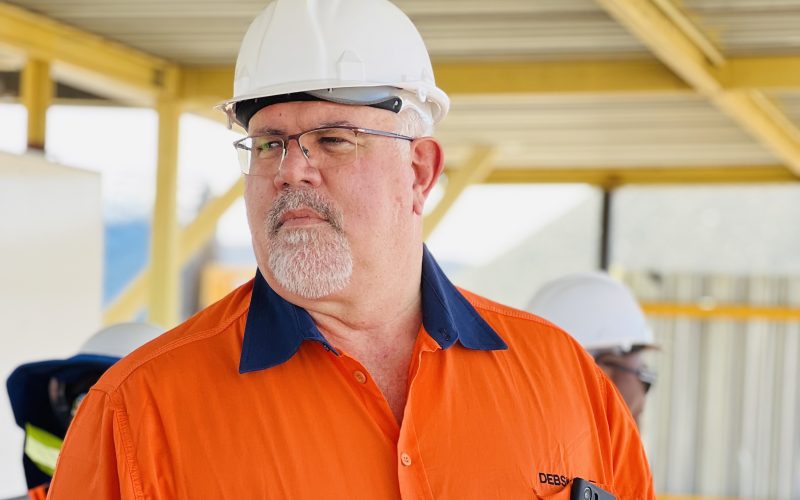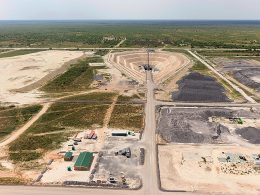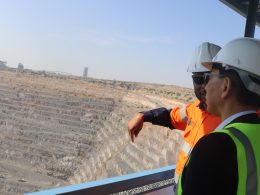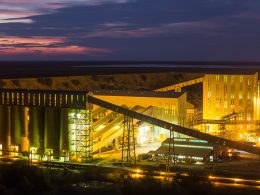The world leading diamond producer by value, Debswana is dedicated to maintaining its position as a world-class diamond mining company, with Horizon 2 Projects at the core of ensuring the long-term sustainability of diamond mining in Botswana.
Horizon 2 Projects operates under the guidance of the Resource Development Plan (RDP), which serves as the long-term business plan for Debswana. The RDP outlines various opportunities and expansion projects, including open pit extensions and underground mining.
“While Jwaneng Mine, Orapa, Letlhakane, and Damtshaa Mines focuses on sustaining current operations, Horizon 2 is dedicated to preparing us for the future. Its core mission is to spearhead essential sustainability projects aimed at extending the lifespan of our mines,” said Teon Swanepoel, Debswana Executive Head of Projects.
“In the face of aging infrastructure, deepening mining sites, and declining revenues, Horizon 2 Projects are actively exploring strategies to maintain profitability while efficiently utilising remaining resources.”
Swanepoel who began his role at Debswana, on the 13th of November revealed that the company is currently working on several major capital projects that are in different stages of development, from conceptual to implementation. Among these, the most notable are the Orapa Cut 3 Project and the Jwaneng Underground Project (JUP).
ORAPA CUT 3
The Orapa Cut 3 Project aims to prolong the life of the Orapa open pit mine, which is one of the largest diamond mines in the world by area. The project involves the deepening and widening of the existing pit, as well as the construction of new infrastructure and facilities to support the increased production.
“The project has recently received approval to progress to the feasibility stage,” said Swanepoel, “The key objectives during the Feasibility Stage were to demonstrate the technical safety of operations and the infrastructure required to ensure a consistent ore supply beyond Cut 2, and to define the most optimal path forward in alignment with Debswana’s strategic direction.”
JWANENG UNDERGROUND PROJECT
The Jwaneng Underground Project (JUP) is the flagship project of Horizon 2 Projects, and the most complex and challenging project in Debswana’s history. The project will facilitate the transition of the Jwaneng open pit mine, which is the richest diamond mine in the world by value, into an underground operation.
The project involves the development of a new underground mine to extend life of mine. The project will also require the construction of new surface infrastructure and facilities, as well as the modification and integration of the existing process plant and tailings management system.
The Jwaneng Underground Project will be developed in distinct phases, ensuring a seamless transition without any production gap between the conclusion of Cut 9 Open Pit operations and the commencement of Underground operations:
The Early Works phase is currently underway and encompasses all preparatory activities required to establish critical infrastructure. These preparations include a rockfall mitigation project, Proto room refurbishment, contractors’ camp improvements, and the setup of laydown areas for workshops, among other essential tasks.
The Debswana Board recently authorized investment for Exploration Access Development. These funds will support the sampling and evaluation of kimberlite pipes, boosting confidence in the resource model, particularly at greater depths.
“The Exploration Access will also serve as the foundational infrastructure upon which Phase 1 of the Underground Mine will be built. The Exploration Access Feasibility Study is progressing according to plan,” said Debswana Executive Head of Projects.
Phase 1 Mining will mark the actual commencement of mining operations, encompassing both waste development and ore production. Studies for Phase 1 Mining are being conducted concurrently with the Exploration Access Study, with a focus on expediting the development of the underground mine. These studies for Phase 1 Mining are also progressing steadily.
Meanwhile the studies for Phase 2 Mining are scheduled to initiate in the early 2030s, leveraging geoscience data obtained from the underground drilling platforms.
ORAPA COURSE RESIDUE AND DRY FINES PROJECTS
In addition to these expansion projects, Horizon 2 Projects are also working on improving process plants, which are responsible for separating the diamonds from the ore. Some of the projects in this area include the Orapa Course Residue Disposal and Dry Fines.
Course Residue Disposal Project is currently in the feasibility stage, focusing on refurbishing and relocating the existing Plant 1 tailings deposition area, along with designing and installing a new permanent conveyor system, among other aspects. The project is expected to improve the efficiency and safety of the tailings management system and reduce the environmental impact of the operation.
Dry Fines Project on the other hand is in the concept study phase, where Swanepoel and his team are exploring various solutions to efficiently utilise raw water and recover effluent water from the slurry produced by the process plants. The project is expected to reduce the water consumption and increase the water recycling rate of the operation, as well as recover more diamonds from the slurry.
BENCHMARKING ABROAD
According to Swanepoel, some of the main technical and operational challenges faced by H2 Projects includes shortage of specialised skills personnel locally, the limited availability of specialised technical mining contractors locally or citizen-owned, and the schedule-driven nature of the projects that require large capital investment.
He said that these challenges are being addressed by recruiting from both regional and international markets, contracting experienced international mining contractors, and resourcing the projects adequately and incorporating value engineering.
LEVERAGING ON NEW TECHNOLOGIES
H2 Projects will leverage on new technologies and innovations to improve efficiency and productivity according to the Executive Head of Projects. He said that they envisage a much-reduced environmental footprint from new ways of mining, including by using several precision mining technologies and data analytics.
“H2 implements major projects for the entire organisation some of which are new technology projects. On project implementation H2 continuously seeks innovative solutions to replace conventional systems, by adopting new technologies as part of value engineering processes,” he said.
SAFETY AND SUSTAINABILITY
Swanepoel also highlighted how H2 Projects will enhance the safety and sustainability of Debswana mining operations and reduce its environmental impact. He said that the projects are meticulously designed and executed with the aim of reducing energy and water consumption, greenhouse gas emissions, and their carbon footprint.
“Safety and sustainability considerations are integrated into every project, starting from the initial concept and continuing through to project completion,” said Swanepoel.
“This commitment also involves the involvement of dedicated and experienced personnel from the Safety and Sustainability discipline, who oversee monitoring and evaluation.
“Additionally, these projects are conducted in conjunction with existing operations, often referred to as brownfield projects, which already possess a robust safety culture aligned with regulatory requirements.”
SOCIO-ECONOMIC IMPACT
Swanepoel explained how H2 Projects will contribute to the socio-economic development of Botswana and its communities. He said that the Botswana government, as a partner in Debswana, derives significant revenue from the sale of diamonds.
He also said that in alignment with their citizen economic empowerment policy, they are unwavering in their commitment to ensure that the people of Botswana continue to reap the benefits of sustained economic growth even after the depletion of diamond resources.
“Each of our projects also incorporates a socio-economic development component, encompassing initiatives such as job creation, business support and development, skills transfer, and more,” the Executive Head of Projects said.
“There is a dedicated budget provision for a legacy project, aimed at addressing social impacts and enhancing the well-being of the communities where the projects are situated. For example, the Jwaneng Cut 9 Project included the construction of the Maboane Clinic at a cost of P12.4 million, which is a testament to our commitment to community welfare.”








